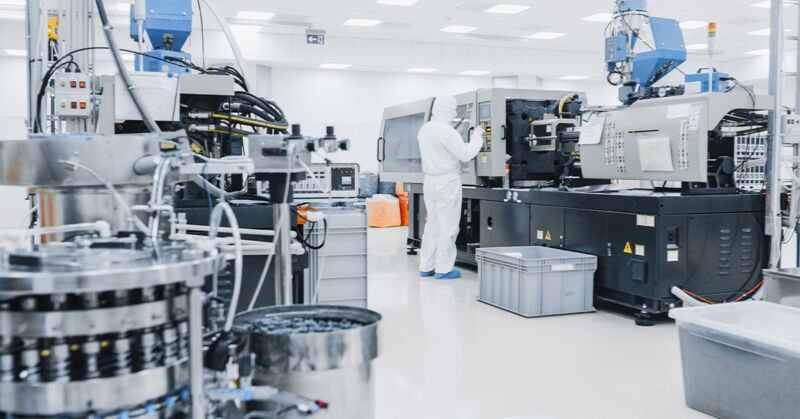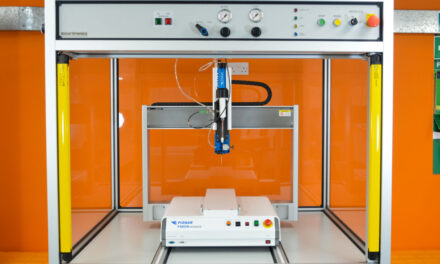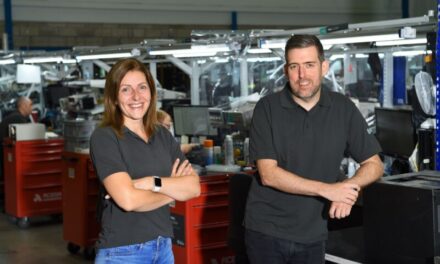Digital transformation is key in ensuring the flexibility, resilience and agility required in pharmaceutical manufacturing, but traditionally, the industry has been resistant to digitalisation. Now, regulatory bodies are pushing for manufacturers to embrace Pharma 4.0 and to incorporate automation into their operations. Here, Alexandra Hughes, Industry Sales Manager at automation software supplier, COPA-DATA UK, explains how its zenon automation integration layer (AIL) can support the digital transformation of pharmaceutical manufacturing and bridge the gap between brownfield and greenfield equipment.
The International Society for Pharmaceutical Engineering (ISPE) introduced the concept of Pharma 4.0 to bring the industry up to speed with the technological revolution seen with Industry 4.0.
However, transitioning to Pharma 4.0 is no easy feat. The nature of pharmaceutical products means that the industry is subject to stringent regulations and scrutiny. These standards must be considered when integrating new processes and technologies, particularly those involving data.
In the industry, many operations rely on paper-based data handling and decision making is typically done by individuals, meaning that there is some personal accountability. This makes validating new processes and technologies is a time consuming and labour-intensive task.
Along with the need to adhere to regulatory frameworks, transitioning to Pharma 4.0 requires the integration of data and elimination of data silos. Data silos can occur in legacy equipment, organisational groups, or software applications used across an operation. This is particularly common with combinations of brownfield and greenfield equipment which cannot automatically connect with one another or the wider system. This data is often in different formats and located across various platforms. To meet the digital needs of the facility, this should be collected in the same congruent format.
In an industry that is constantly evolving, digital transformation can be a significant competitive advantage. Embracing Pharma 4.0 can improve agility, efficiency, and output quality, as well as reducing waste and costs.
To incorporate digitalisation in pharma, it is key that brownfield equipment can communicate with greenfield equipment, and the wider IT infrastructure. Overhauling systems or investing in new equipment can be a long and costly process, a much more cost-effective and straightforward way is to use an industrial automation software as a middleware-type solution. These tools can bridge the gap between brown and greenfield equipment from the edge, by acquiring data from all sources and communicating it in the same format.
An integrated solution
To address some of the issues impacting digitalisation in the pharmaceutical industry, COPA-DATA’s zenon has an Automation Integration Layer (AIL) that acts as middleware. It is a vertical data integration system able to integrate the shop floor with a range of IT platforms, including manufacturing execution systems (MES)and enterprise resource planning (ERP) systems.
Crucially for the pharmaceutical industry, it is also compliant with data integrity regulations out of the box with GAMP5 Cat. 4 software. This reduces validation requirements and disruptions to processes, keeping important project know-how in house. The platform is a scalable way to extract, consolidate and evaluate all current data to create a new network in the existing system.
The standardisation of electronic data allows all departments to visualise entire processes and identify potential issues or deviations from GMP parameters. zenon can notify the appropriate operator when errors arise so they can be immediately rectified. Historical GMP data such as audit trails or alarms can also be stored and accessed by Quality Assurance departments for future process control or batch reviews.
Despite the challenges of implementing Pharma 4.0, it offers a significant competitive advantage to manufacturers. Investing in specialised pharmaceutical industry software can help to future proof an operation and drive progress. Digitalisation will be essential in shaping pharmaceutical manufacturing in the coming years, so embracing this technology now will allow manufacturers to reap the benefits and compete with the rest of the industry.




